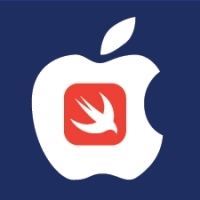What Apple’s Swift Means for Developers, Testers, and Businesses

Few announcements at this year's Apple’s Worldwide Developers Conference left people as surprised as the introduction of Swift, a brand-new programming language for OS X and iOS application development. What will this mean for developers, testers, colleges, and businesses who have poured time and resources into developing Objective-C expertise?
The answer seems to be “not very much,” at least in the short term. Swift is compatible with existing Objective-C codebases, and most of Apple’s existing frameworks are Objective-C. So for the time being, in order to harness the full power of mobile devices as well as maintain compatibility with previous versions of OS X and iOS, developers are going to continue to use Objective-C until—and if—equivalent Swift frameworks are available.
Swift is still a moving target and very much in development, so this could take some time—especially because there are more than seven years’ worth of Objective-C code-comprising, critical applications that will need to be maintained or migrated. With as much COBOL as is still in existence, can anyone (with a straight face) say that Objective-C is going anywhere soon?
That said, Swift promises to bring a lot of goodness to the table for those new to OS X and iOS software development and testing. First, with a syntax similar to that of Ruby and Python, Swift will probably appeal to younger programmers. Swift is terse; it doesn’t take a lot of code to get a lot done. As a result, application development should speed up.
Second, Swift brings with it a new feature (to Apple development environments, anyway) called Playgrounds. Playgrounds are interactive environments that allow developers to see the immediate effects of changing or adding code without having to go through a time-consuming recompile and execution cycle. This promises to reshape the OS X and iOS application testing landscape.
The demand is likely to be hot for Swift developers. Colleges would be well advised to watch closely and begin to integrate Swift into the curriculum in order to meet demand for the next generation of mobile application developers.
Apple has made it apparent that it intends for Swift to ultimately replace Objective-C. Android has long been considered the easier platform for mobile development. But with Apple’s announcement of Swift, it looks like that gap could be significantly closed. Developers and testers who have found themselves locked out of the Objective-C environment due to the high learning curve should take advantage of the situation and jump out in front this time. All signs point to the playing field being leveled.
Jennifer Bonine is presenting the tutorials What’s Your Leadership IQ? and Innovation Thinking: Evolve and Expand Your Capabilities at STARWEST, from October 12–17, 2014.

